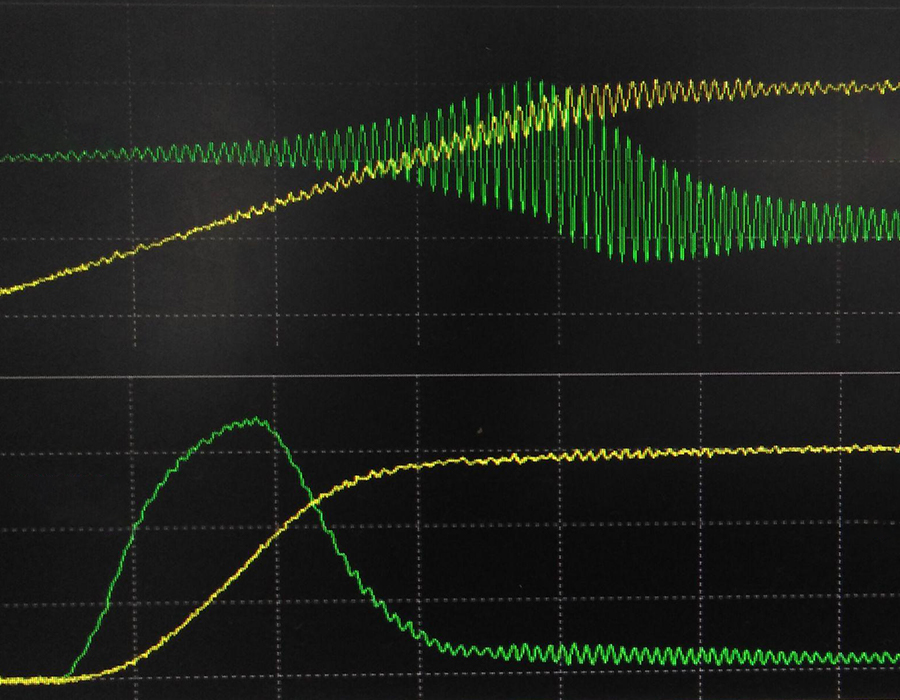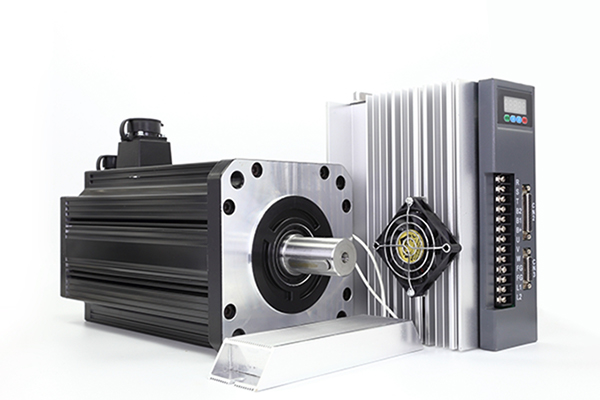Home » Servo System » What is Resonant Frequency in Servo System?
What is Resonant Frequency in Servo System?
Servo system resonance frequency refers to the frequency at which a resonance phenomenon occurs within the system when it is excited by the outside world in a servo system. In a servo system, resonant frequency is a very important parameter, which directly affects the stability and performance of the system.
Let's understand what a servo system is. A servo system is a system that can control the output position, speed or force based on an input signal. It consists of a controller, an actuator and a feedback device. The controller calculates the control signal according to the input signal and feedback information, and then realizes the control of the system through the actuator.
In servo systems, the resonant frequency is the frequency at which the system resonates due to the inherent characteristics of the system when it is excited by an external source. When the excitation frequency of the system is equal to or close to the resonance frequency, the system will resonate, which will lead to a decrease in the stability of the system, or even cause system failure. Therefore, the design and commissioning of the servo system, need to try to avoid the excitation frequency close to the resonant frequency to ensure the stability of the system.

Calculation of resonant frequency usually requires consideration of parameters such as mass, stiffness and damping of the system. In servo systems, mass usually refers to the mass of the load, while stiffness refers to the rigidity of the system and damping refers to the damping characteristics of the system. All these parameters affect the magnitude of the resonant frequency.
In practice, some measures can be taken to adjust the resonance frequency of the system in order to avoid the effect of resonance frequency on the system. For example, the magnitude of the resonant frequency can be adjusted by changing the parameters of the system such as mass, stiffness and damping. In addition, the effects of the resonance frequency can be suppressed by the design and parameter adjustment of the controller.
In addition to the size of the resonant frequency, the stability of the resonant frequency is also an important factor to be considered in the design of the servo system. In practice, the parameters of the system often have certain errors and changes, which will have an impact on the stability of the resonant frequency. Therefore, in the servo system design and debugging, need to take into account the system parameters of the error and change on the resonant frequency of the impact, and take corresponding measures to improve the stability of the resonant frequency.
To summarize, the resonant frequency of the servo system is an important parameter, which directly affects the stability and performance of the system. When designing and debugging the servo system, the parameters of the system need to be reasonably adjusted to avoid the excitation frequency close to the resonance frequency, so as to ensure the stability of the system. The stability of the resonant frequency also needs to consider the effect of errors and changes in the system parameters on it, and take corresponding measures to improve the stability of the resonant frequency. Only in the case of effective control of the resonant frequency, the servo system can work properly and achieve the desired control effect.
Let's understand what a servo system is. A servo system is a system that can control the output position, speed or force based on an input signal. It consists of a controller, an actuator and a feedback device. The controller calculates the control signal according to the input signal and feedback information, and then realizes the control of the system through the actuator.
In servo systems, the resonant frequency is the frequency at which the system resonates due to the inherent characteristics of the system when it is excited by an external source. When the excitation frequency of the system is equal to or close to the resonance frequency, the system will resonate, which will lead to a decrease in the stability of the system, or even cause system failure. Therefore, the design and commissioning of the servo system, need to try to avoid the excitation frequency close to the resonant frequency to ensure the stability of the system.

Calculation of resonant frequency usually requires consideration of parameters such as mass, stiffness and damping of the system. In servo systems, mass usually refers to the mass of the load, while stiffness refers to the rigidity of the system and damping refers to the damping characteristics of the system. All these parameters affect the magnitude of the resonant frequency.
In practice, some measures can be taken to adjust the resonance frequency of the system in order to avoid the effect of resonance frequency on the system. For example, the magnitude of the resonant frequency can be adjusted by changing the parameters of the system such as mass, stiffness and damping. In addition, the effects of the resonance frequency can be suppressed by the design and parameter adjustment of the controller.
In addition to the size of the resonant frequency, the stability of the resonant frequency is also an important factor to be considered in the design of the servo system. In practice, the parameters of the system often have certain errors and changes, which will have an impact on the stability of the resonant frequency. Therefore, in the servo system design and debugging, need to take into account the system parameters of the error and change on the resonant frequency of the impact, and take corresponding measures to improve the stability of the resonant frequency.
To summarize, the resonant frequency of the servo system is an important parameter, which directly affects the stability and performance of the system. When designing and debugging the servo system, the parameters of the system need to be reasonably adjusted to avoid the excitation frequency close to the resonance frequency, so as to ensure the stability of the system. The stability of the resonant frequency also needs to consider the effect of errors and changes in the system parameters on it, and take corresponding measures to improve the stability of the resonant frequency. Only in the case of effective control of the resonant frequency, the servo system can work properly and achieve the desired control effect.
Post a Comment:
You may also like:

Category
Featured Articles
What are the Basic Components of ...
 Servomechanisms, called servos for short, are the basic building blocks of power drives. In this manual what we mean by a power ...
Servomechanisms, called servos for short, are the basic building blocks of power drives. In this manual what we mean by a power ...
 Servomechanisms, called servos for short, are the basic building blocks of power drives. In this manual what we mean by a power ...
Servomechanisms, called servos for short, are the basic building blocks of power drives. In this manual what we mean by a power ...What is Servo System?
 A feedback control system used to precisely follow or reproduce a process. Also known as a follower system. In many cases, a ...
A feedback control system used to precisely follow or reproduce a process. Also known as a follower system. In many cases, a ...
 A feedback control system used to precisely follow or reproduce a process. Also known as a follower system. In many cases, a ...
A feedback control system used to precisely follow or reproduce a process. Also known as a follower system. In many cases, a ...What Should Consider Before Using ...
 Servo system is a commonly used control system, widely used in industrial automation. It compares the output signal with the ...
Servo system is a commonly used control system, widely used in industrial automation. It compares the output signal with the ...
 Servo system is a commonly used control system, widely used in industrial automation. It compares the output signal with the ...
Servo system is a commonly used control system, widely used in industrial automation. It compares the output signal with the ...What is the Bandwidth of ...
 For a servo system, the bandwidth is the maximum sine wave frequency to which the servo system can respond. In professional ...
For a servo system, the bandwidth is the maximum sine wave frequency to which the servo system can respond. In professional ...
 For a servo system, the bandwidth is the maximum sine wave frequency to which the servo system can respond. In professional ...
For a servo system, the bandwidth is the maximum sine wave frequency to which the servo system can respond. In professional ...